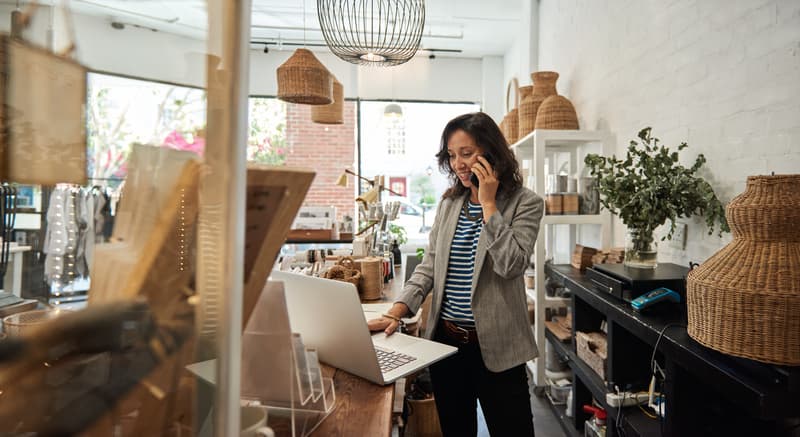
Voyado’s 2022 Shopping Index also revealed a strong increase in customer returns, despite an overall boost to overall purchases.
Shoppers are buying more, but spending less in 2022, according to the latest Voyado Shopping Index. Voyado, the Nordics’ leading customer experience cloud, analysed aggregated data from 164 million anonymous customers’ purchase occasions and found:
- An overall decline in receipt value of 4% per customer.
- An 11% average increase in the number of separate purchases per customer.
- Customers using multiple channels to shop had a 9% higher receipt value.
An overall increase in purchase rates across all categories was also registered. The greatest increase (16%) was observed in the DIY and Home Improvement sector, closely followed by Sports and Fashion (11%). The Index also revealed that, in Sports and Fashion sectors, women tend to shop more frequently than men.
On average, the number of items per receipt has dropped by 2%:
- Sports and Fashion saw the largest drop (-7%). The only group exempt were men from 35 – 55 and women of 45 – 65.
- Health and Beauty average did not drop overall, but decreases were observed among those aged 18 – 25 and those aged 45 and over.
Per Akerberg, chief executive, Voyado, sees further changes in consumer priorities and marketing practices on the horizon. He said:
“We saw a big shift in digitalisation during Covid when retailers invested heavily in improving their tech stack to meet the needs of the consumers during those special circumstances. What has impacted shopping behaviour in the past 12 months is primarily the economic situation; it has caused a decline in overall consumer spending and brands are under pressure to adjust to post-Covid shopping behaviour.
“I think customers’ hunt for a bargain is going to drive more traffic online – it’s far easier to shop around and compare prices on the internet compared to in-store. We will likely see some brands try to foster deeper connections with customers through live shopping and social commerce. Europe is currently lagging behind Asia significantly in this area, but I expect the market to begin catching up as niche brands search for new ways to engage with their customers.”
Decline in personalisation means fewer clicks
The data also revealed that email personalisation rates have decreased by 18%. Nonetheless, the number of emails sent per shopper has increased by 30%, suggesting reduced capacity for personalisation among email marketers.
- Sports and Fashion related emails have increased by 70% and males between 18 – 25 have seen a surge of 190%
More emails have led to a lower click-through rate, with the Index registering an overall decrease of 27% across the board.
- Health and Beauty and Sports and Fashion categories are most affected – both saw a 27% drop in clicks
However, the click rates for emails sent to re-engage shoppers who abandoned their carts has increased by 3% across all ages and genders across 12 months
- Older generation in men, men 56+, spend the most from an abandoned cart email.
Per Continues:
“The engagement for abandoned cart emails vs the drop for normal email click rate shows how important it is for retailers to be both relevant and accurate in email communication. Abandoned carts present an opportunity for hyper-personalisation around specific product(s) and providing relevant reminders and engaging content will be paramount for retailers and actually boost average receipt value during a consumer confidence crisis”
More frequent purchases, but higher returns rates
The data also indicates a strengthening relationship between purchase frequency and brand loyalty. The average time gap has decreased to 266 days between first and second purchases, 176 days between the second and third, and 148 between the third and fourth. In other words, with each purchase, the possibility that another will be made increases. The Index also revealed that the average time gap is smaller for men than women -on average, repeat purchases in men occur every 210 days, whereas women purchase from the same brand every 210 day
Voyado’s research also indicates that returns have increased, on average, by 13% across all categories tracked. Most of the returns are from women, who also account for much of the increase in Health and Beauty and Sports and Fashion. The highest return rates (20%) can be found in DIY and Home Improvement. This was followed by Electronics (11%)
Karl Stone, Head of Voyado UK, commented on the growing trend towards customer returns:
“The increase in return rates across all categories is obviously a major talking point right now. Buy Now, Pay Later, could be a driving factor here – it heightens the chances of impulse buys and consumers may later find that they can’t afford the addition to their monthly outgoings. Getting consumers to understand the “true” price of an item would improve this, but we must also educate them on what mass returns mean in terms of carbon footprint.
“Retailers could also consider charging for returns as a kind of deterrent. Equally, allowing customers to return items instore could potentially lead to more item exchanges and fewer refunds.”


